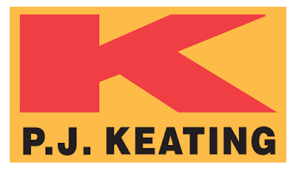News
EPA settlement with Fleur de Lis resolves oil spills affecting surface waters in Wyoming
Feb 10, 2021
Cheyenne, Wyo. (February 10, 2021) - The U.S. Environmental Protection Agency (EPA) today announced a Clean Water Act (CWA) settlement with Fleur de Lis Energy and Fleur de Lis Operating, LLC (Fleur de Lis) in which the companies have agreed to pay $1.9 million for alleged Clean Water Act violations associated with the operation of oil and gas facilities in the state of Wyoming.
The settlement, lodged today in the United States District Court for the District of Wyoming, involves six separate discharges of crude oil and produced water from Fleur de Lis operated facilities into waters of the United States and their adjoining shorelines; inadequate Spill Prevention Control and Countermeasure (SPCC) Plans for five facilities; inadequate Facility Response Plans (FRP) for three facilities; and no FRP for one facility.
"Companies that store oil must ensure they have adequate spill prevention and discharge response plans to protect public health and the environment," said Suzanne Bohan, director of EPA Region 8’s Enforcement and Compliance Assurance Division. "EPA is committed to ensuring compliance with federal requirements that safeguard our rivers and streams.”
EPA alleges Fleur de Lis oil and gas operations were responsible for spills of oil and produced water to surface waters in Wyoming between October 5, 2016, through May 29, 2018, including one spill in the Linch Complex Field in Johnson County and five spills in the Salt Creek Field in Natrona County. Each of the spills impacted adjoining shoreline and/or caused a sheen on tributaries to Salt Creek, a tributary of the Powder River. The two largest were reported to be 7,307 barrels (306,907 gallons) and 559 barrels (23,478 gallons).
EPA also alleges that Fleur de Lis failed to prepare adequate SPCC plans for five facilities. Discharges from these facilities have the potential to impact tributaries to Salt Creek in the Salt Creek Field and Indian Draw, a tributary to Salt Creek in the Linch Complex Field.
In addition, EPA alleges that Fleur de Lis failed to prepare adequate FRPs, or had no FRPs in place, from April 2015 through December 2017 at four facilities and failed to develop and implement a facility response training and drill/exercise program. The planning distance for these four facilities, which represents the extent of potential impacts associated with a worst-case spill scenario, extends over 90 miles to the Powder River.
The Clean Water Act prohibits discharges of oil to waters of the United States that violate applicable water quality standards; or cause a film or sheen upon or discoloration of the surface of the water or adjoining shorelines; or cause a sludge or emulsion to be deposited beneath the surface of the water or upon adjoining shorelines.
The Oil Pollution Prevention requirements of the Clean Water Act are intended to prevent and facilitate the response to the discharge of oil from non-transportation-related onshore facilities. All facilities with 1,320 gallons of oil that have the potential for a spill to reach waters of the United States are required to have an SPCC Plan. Facilities with storage capacity of one million gallons or more and have the potential to impact fish, wildlife and sensitive environments are also required to meet FRP requirements.
The $1.9 million penalty will be deposited into the Oil Spill Liability Trust Fund, a fund used by federal agencies to respond to discharges of oil and hazardous substances. Fleur de Lis has submitted SPCC and FRP plans that satisfy regulatory requirements; is satisfactorily continuing its pipeline maintenance program; and has demonstrated that it can implement its FRP and respond to discharges into Salt Creek and the Powder River.
For more information on the Clean Water Act, visit EPA's compliance web page: http://www.epa.gov/compliance/civil/cwa/index.html
For more information on SPCC and FRP regulatory requirements visit EPA's compliance web page: http://www.epa.gov/oil-spills-prevention-and-preparedness-regulations
Help EPA protect our nation's land, air and water by reporting violations: http://www.epa.gov/tips/
Forms, Reports, Regulations, Pictures, Graphs, Examples









































































































